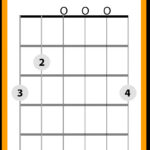While electric guitars often take center stage, the unsung heroes amplifying their voices are Guitar Amplifiers. An electric guitar, even a hollow body, produces a relatively quiet sound on its own. Guitar amps are the powerhouses that take the weak electrical signal from your guitar pickups and transform it into the sounds that inspire generations of musicians. They are the vital link in your signal chain, giving your instrument the volume and tone needed to be heard, whether practicing at home or rocking out on stage.
For guitarists seeking portability and convenience, combo guitar amplifiers are an excellent starting point. These all-in-one units encapsulate the preamp, power amp, and speakers within a single cabinet. This design makes combo amps incredibly practical for situations demanding quick setup and teardown. They are ideal for band rehearsals, street performances, or smaller gig venues where a massive stage volume isn’t necessary. The combo amp is a versatile workhorse, a fundamental piece of gear in any guitarist’s arsenal due to its ease of use and portability.
For those requiring more power and flexibility, amplifier heads and speaker cabinets offer a modular approach. An amplifier head is the electronic heart of a stack, containing the preamp and power amp sections but designed to be paired with external speaker cabinets. Typically, amp heads boast significantly more power than the amplifier sections found in combo amps. The preamp and power amp circuits within the head are crucial in shaping your guitar’s tone. Notably, this is where the choice between tube and solid-state technology significantly impacts your sound. Exploring options like the Fender Bassbreaker Amplifiers can reveal how modern amplifier heads blend vintage sonic character with contemporary features.
When it comes to tonal characteristics, the choice between tube and solid-state amplifiers is pivotal. Tube amplifiers are often favored for their warm, rich tones, enhanced dynamic response, and natural overdrive when pushed hard. They provide a vintage feel and a pleasing harmonic complexity that many guitarists find desirable. Conversely, solid-state amplifiers excel in delivering clean, pristine tones with exceptional reliability and consistency. Solid-state technology is often preferred for genres where clarity and precision are paramount. Ultimately, the best choice hinges on your personal sonic preferences and the style of music you play.
Speaker cabinets are indispensable partners for standalone amplifier heads. When selecting speaker cabinets, it’s crucial to consider the overall power handling capacity to ensure compatibility with your amplifier head’s output. Matching the wattage appropriately prevents damage and ensures optimal performance. Speaker configuration also plays a significant role in shaping the final sound. Larger speaker sizes, such as 12-inch woofers, are known for producing a fuller, more powerful bass response, while smaller speakers, like 10-inch or tweeters, emphasize higher frequencies and clarity. The combination of speaker sizes and types within a cabinet contributes significantly to the amp’s overall sonic character.
Choosing the right guitar amplifier for the venue is a critical consideration for any gigging musician. Using an excessively powerful amplifier in a small club is not only unnecessary but can also lead to unwanted volume levels and a muddy sound. A smaller combo amp would be far more suitable and easier to manage in such intimate settings. Conversely, attempting to fill a large theater or outdoor venue with a small practice amp will result in your guitar being lost in the mix, and potentially inaudible to much of the audience. Carefully consider the size of the venues you typically play and select an amplifier that provides adequate headroom and projection for those environments. Taking the time to assess your needs will ensure you always have the right amp for the job, delivering the best possible sound in any situation.


